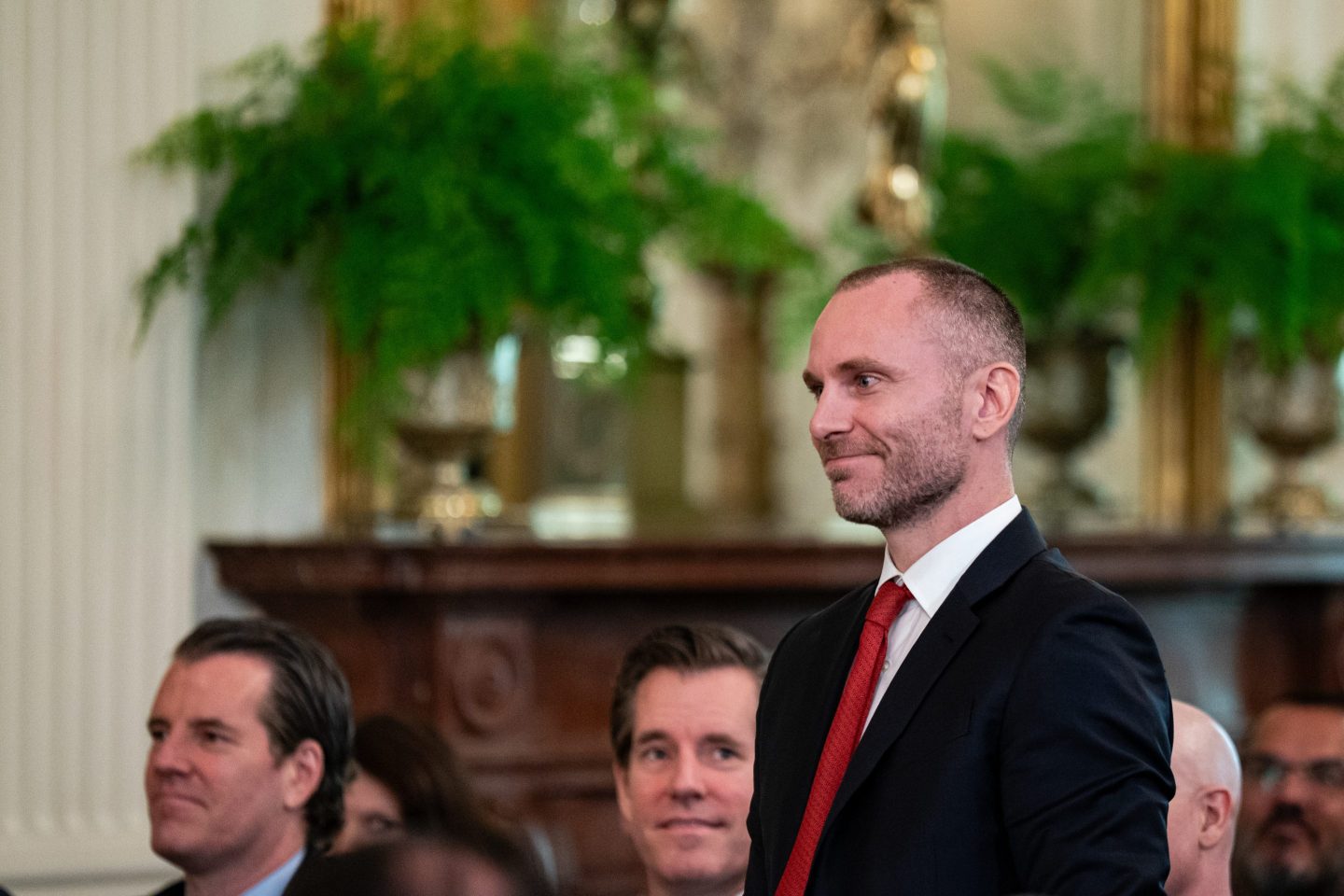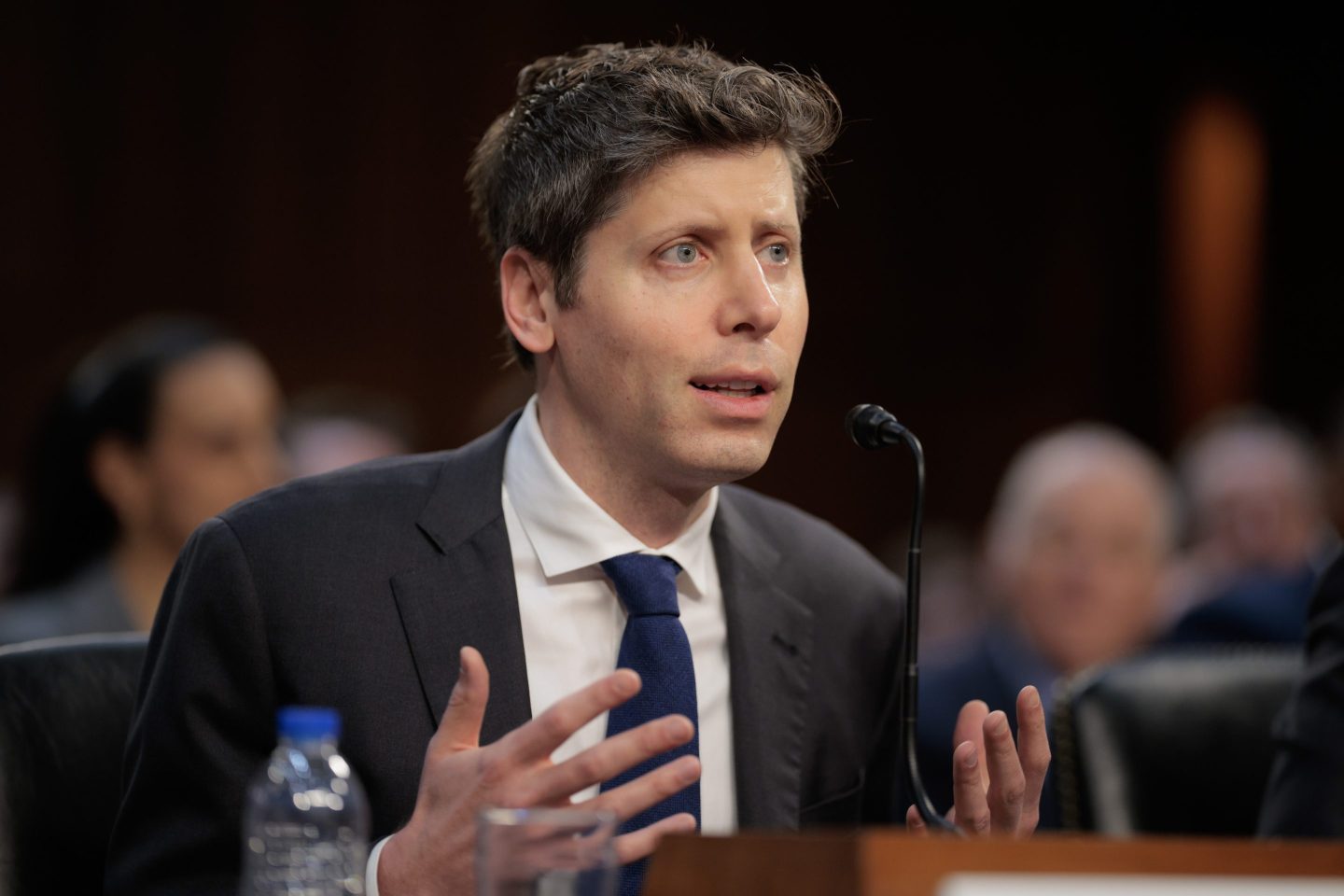One of crypto’s largest, and most controversial, companies is coming to the U.S. On Friday, at an event held at a spy-themed museum in New York City, the stablecoin issuer Tether announced that it was launching a U.S. stablecoin called USAT, a stunning reversal for an operation that just last year appeared to be in the crosshairs of U.S. law enforcement officials.
To launch USAT, Tether has tapped Anchorage Digital, one of the largest crypto custodians that has touted its ability to issue stablecoins compliant with the Genius Act—newly passed legislation in the U.S. that establishes guardrails for the issuance and management of stablecoins. Tether’s longtime partner Cantor Fitzgerald will serve as the custodian to hold the new stablecoin’s reserves.
Tether’s decision to launch a U.S. stablecoin reflects the changing fortunes of the stablecoin giant, which counts Commerce Secretary Howard Lutnick as one of its top advocates. At Friday’s event, the company announced that former top White House crypto official Bo Hines would serve as the project’s CEO.
“We were under a severe pressure from competitors that wanted to create a monopolistic environment in the United States,” said Tether CEO Paolo Ardoino onstage. “The big mistake there was simply to discount the fact that we think Tether is the best product in the market.”
Formerly shunned by top politicians, Tether hosted a who’s who from Congress and crypto at its Friday event: U.S. representatives Bryan Steil (R-Wis.) and Addison McDowell (R-N.C.) were present, along with top crypto venture capitalists Paradigm managing partner Matt Huang and Multicoin Capital managing partner Kyle Samani.
Tether’s rise
Founded in 2014, Tether is the issuer of an eponymous stablecoin, or a type of cryptocurrency that is pegged one-to-one with an underlying asset, typically the U.S. dollar. As crypto adoption grew and the price of Bitcoin soared, Tether’s USDT became the largest stablecoin in crypto and one of the most widely held cryptocurrencies, with a market cap today of nearly $170 billion. Thanks to its tiny staff of just under 300 and billions of dollars in income earned from the yield of its holdings, Tether is also one of the most profitable companies in the world per employee, according to its unaudited financials.
But despite its success, the secretive company has been a lightning rod for criticism. This includes the opaque way that it has managed the reserves that back its stablecoin, as well as its stablecoin’s role in global illicit finance, where it’s been used for illegal activities from terrorism to money laundering. Tether has strongly rejected the claims, though it has been the target of different law enforcement actions, including a settlement with the New York attorney general and a reported investigation by the U.S. Department of Justice.
Its decision to launch a U.S.-compliant stablecoin comes after Congress passed the Genius Act in July, which paved the way for new challengers, from banks to a crop of new startups, to launch their own tokens. For Tether, which is largely used outside the U.S., the move raises questions as to the utility of its new U.S. offering and what type of traction it will achieve.
More than potential adoption, though, the move reflects Tether’s growing influence in the U.S. with the Trump administration. Lutnick became a cheerleader for the company after his financial firm, Cantor Fitzgerald, started managing the bulk of its reserves. And in August, Tether hired former top Trump crypto official Bo Hines to lead its U.S. expansion. They elevated him to CEO on Friday.
Tether’s main advantage is its massive moat, with the next largest stablecoin, Circle’s USDC, significantly trailing with a market cap of just $72 billion. But with the Genius Act’s establishment of a sanctioned path forward for traditional financial institutions to enter the market, potential users will have a wealth of options from which to choose. Some offerings are beginning to experiment with passing yield back to their users, though the Genius Act prohibits issuers like Tether from sharing its interest earnings with customers.
On Tether’s newly launched website for its U.S. stablecoin, USAT, the company said that the main use cases would be for remittances, global payments, and online checkouts. The company aims to launch its U.S. stablecoin by the end of the year, said Hines, who plans to establish the headquarters of USAT in Charlotte, N.C.
“We want to dominate,” he said, “but we want to do that in the U.S.”
Update, Sept. 12, 2025: Provided more details from the Tether event on Friday.













